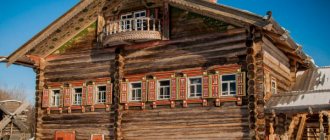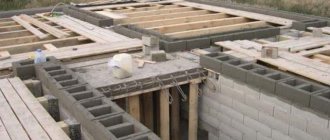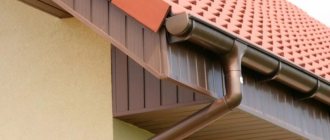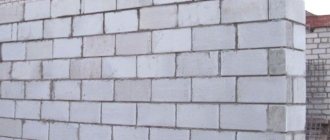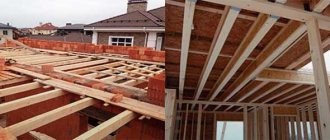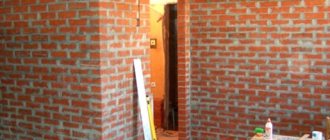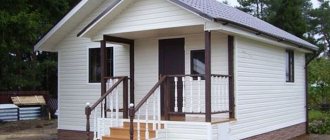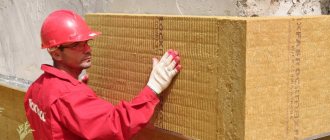Length of driven piles
There are reinforced concrete, concrete and wooden driven piles. Shape: round, square, T-shaped, I-beam, hollow.
Standard lengths range from three to 16 meters. Minimum for reinforced concrete pile:
- 3 meters for solid.
- 4 meters for hollow.
You can use more or less, they are made to order. At large immersion depths, composite piles are more often used, and the driving method is rarely used, usually combined.
The diameter of reinforced concrete piles is up to 80 centimeters, shells - up to a meter.
Support dimensions
The production of screw piles in a factory is regulated by GOST provisions, created on the basis of numerous laboratory tests, calculations and practical observations. First of all, the standards determine the grades of steel acceptable for the production of supports, their length and diameter. The durability of their operation and load-bearing capacity completely depend on these parameters.
The standard dimensions of screw piles, according to GOST, are:
Diameter
- 57 mm;
- 76 mm;
- 89 mm;
- 108 mm;
- 133 mm;
- 159 mm.
They can be from 1.6 to 12 m in length.
Specifications
The key parameter for determining the load-bearing capacity is the size of the screw piles, primarily their diameter. The length of the support can be adjusted by cutting directly at the construction site. Thus, the cross-sectional diameter is the main parameter of the pile, which is taken into account when designing a load-bearing foundation for a future building. Knowing the load-bearing capacity of screw piles, the architect-designer will be able to calculate the minimum permissible cross-section of the support and the distance between them.
When calculating the load-bearing capacity of a particular type of pile, the characteristics of the soil should also be taken into account. The weaker the strength of the constituent rock, the lower the permissible load on the pile.
Types of pile supports
57 mm
The load-bearing capacity of screw piles of this type, taken as an average value, is 0.8 tons. Such supports are widely used for the construction of wooden, frame and other lightweight low-rise buildings on subsiding and heaving soils.
Also, 57 mm piles can be used if it is necessary to build a building on a site that has a significant slope. As a rule, the deepening of racks of similar diameter is done manually using a lever-pile driver.
89 mm
Screw piles of similar diameter can withstand, provided they are installed on solid soil, up to one and a half tons of external loads. The scope of application of supports of this cross-section is log, lumber or aerated concrete buildings of 1 - 2 floors, erected on bulk soils, marshy soils or in areas with high groundwater levels. The deepening process occurs, depending on the strength of the soil, either manually or using machinery.
108 mm
The load-bearing capacity of 108-mm screw piles reaches 3 - 3.5 tons. Thanks to this, they can take much larger loads: on such a foundation one-story brick or reinforced concrete buildings, hangars with metal frames, warehouses, etc. can be built. It is very difficult to install such foundation structures without the use of specialized equipment, especially if the lowering depth is 5-10 meters.
Screw posts of various diameters
133 mm
This type of piles has the highest load-bearing capacity, exceeding 6 tons per support. They can be used for the construction of massive mansions, cottages and country houses made of brick, stone or monolithic reinforced concrete. Drilling supports with such a diameter to any significant depth without special equipment is impossible due to the large mass of the pile and the increased resistance of the soil.
The video shows how you can make lightweight screw piles for a fence yourself using available materials and tools. However, supports of a similar design are quite suitable for the construction of light outbuildings: bathhouses, barns and garages.
Using screw piles, you can create an inexpensive and, most importantly, strong and durable foundation for low-rise buildings of almost any type. It is only necessary to correctly calculate the total weight of the future structure and, in accordance with this, choose the right type of support.
Piles: length of industrial piles
Ready-made driven piles are produced, the length of which ranges from 3 to 16 meters. In some cases, it is possible to manufacture longer piles. However, if there is a need to carry out deep immersion of piles, composite piles are more often used.
According to the method of interaction with the ground , piles are divided into:
- Rack piles that rest on dense soil or rock foundation, reaching the design depth.
- Friction piles are those that are capable of carrying the design load due to lateral friction forces.
Also, piles may differ in the method of immersion in the ground :
- Driving is the most common and technologically proven method of driving piles.
- Indentation is the safest for neighboring buildings, but also a very expensive method of immersion, associated with the use of expensive equipment.
- Vibration driving also requires specific and often expensive equipment - vibrating hammers.
- Screwing – applicable only for screw piles.
- Combined - combining different methods from those listed above.
See also:
- Pile work, information
- Piling works, more details
Attention! In our practice, we use driven piles, the length of which can reach 12 meters, and we drive them without excavation or with preliminary leader drilling. In addition, we also install screw piles, which are increasingly in demand among the population.
What does the permissible load depend on?
If we define the concept of bearing capacity, then it represents the maximum permissible pressure on a foundation element that it can withstand. The design load on one screw pile should always be less than its load-bearing capacity. Equality of values is undesirable, since it is worth providing a reserve in case of unforeseen circumstances.
The permissible load on a screw pile depends on the following factors:
- diameter of pipe and blades;
- foundation soil strength;
- pile length.
When performing the simplest calculations for a private house, you only need to know the strength characteristics of the base and the area of the petal sole (blade). The calculation is performed using the following formula:
N = F/γk.
In this formula, N is the load-bearing capacity of the screw pile (how much it can withstand), F is the value of the load-bearing capacity (not optimized), γk is the load reliability factor, taken depending on the number of supports for the building and the method of performing geological surveys.
The coefficient γk is assigned equal to the following values:
- 1.2 when conducting accurate geological tests of the foundation soil, by performing sounding and laboratory studies. It is impossible to do this on your own. The method is not suitable for private housing construction due to its high cost, which will greatly increase the construction budget.
- 1.25 when testing using a standard pile. Although this method is simpler than the previous one, only a person with knowledge of geology can determine how much the soil can withstand.
- When doing independent soil research and using tabular strength indicators, the coefficient is taken depending on the number of supports. If the bearing capacity is determined for a screw pile with a low grillage, then the value will be 1.4-1.75 with the number of supporting elements ranging from 5-20 pieces.
Important! It is most practical to use the second method because... full-fledged geological surveys are expensive, and independent study of the soil at the depth of driving piles is almost impossible.
A very interesting video on testing screw and other piles, for one and a comparison of load-bearing capacity:
To find F, you will need to perform calculations using the following formula:
F = S*Ro.
Here S is the area of the blade, which is calculated using the formula for a circle (S = πR² = (πD²)/4). The initial data is provided by the manufacturer of the screw pile. For the most common screw pile diameters, you can use the table below.
| Screw pile diameter, mm | Blade diameter, mm |
| 89 | 250 |
| 108 | 300 |
| 133 | 350 |
These elements are most often used for light private buildings.
After determining the area of the petal base of the screw pile, you need to find out the strength characteristics of the foundation soil (letter Ro in the formula). To do this, you will need to carry out at least the simplest geological surveys using manual drilling or excavation pits. The soil can be examined visually and by touch; it is recommended to carry out the determination using GOST “Soils. Classification".
The table below examines what foundation strength needs to be taken into account for various soils.
| Foundation soil determined based on survey results | Ro at a distance of 1.5 m or more from the ground surface, kg/cm2 |
| Pebbles with clay particles | 4,50 |
| Gravel with clay particles | 4,00 |
| Coarse sand | 6,00 |
| Medium sand | 5,00 |
| Fine sand | 4,00 |
| Dusty sandy soil | 2,00 |
| Loams and sandy loams | 3,50 |
| Clays | 6,00 |
| Subsidence foundation or bulk foundation with compaction | 1,50 |
| Bulk foundation without compaction work | 1,00 |
Knowing how much soil can withstand per square centimeter and the area of the supporting part of the screw pile, you can find the preliminary value of the bearing capacity F (without taking into account the reliability coefficient). The value is substituted into the first formula and the final maximum permissible load on one foundation element is found.
You can determine in more detail how much a pile can withstand using formula 7.15, clause 7.2.10 of the SP “Design and installation of pile foundations.” All points that can affect the load-bearing capacity are taken into account here, namely:
- working conditions;
- soil characteristics;
- blade depth (lateral friction is added);
- blade diameter;
- the nature of the pile’s operation (pulling or compression).
It is quite difficult to carry out the calculation; you will need to find many coefficients and characteristics of the soil (not only the bearing capacity is taken into account here, but also the angle of internal friction, specific adhesion, specific gravity, etc.). To simplify the work, you can use the tables that are given for the most common pile diameters (most often for private housing construction, 89 mm, 108 mm, 133 mm are used).
For piles with a diameter of 89 and 108 mm, the following table can be given:
| Soil type | Load-bearing capacity of piles 89 and 108 mm with a blade diameter of 300 mm in tons, taking into account the depth of the screw | |||
| 1.5 m | 2.0 m | 2.5 m | 3.0 m | |
| Soft plastic loess | 2,2 | 2,9 | 3,6 | 4,3 |
| Semi-hard clay | 4,7 | 5,4 | 6,0 | 6,7 |
| Resilient clay | 4,2 | 4,9 | 5,6 | 6,3 |
| Soft plastic clay | 3,7 | 4,4 | 5,0 | 5,8 |
| Semi-solid loams and sandy loams | 4,4 | 5,1 | 5,8 | 6,5 |
| Tight plastic loams and sandy loams | 3,9 | 4,6 | 5,3 | 6,0 |
| Soft plastic loams and sandy loams | 3,5 | 4,2 | 4,8 | 5,5 |
| Sand of medium and coarse fraction | — | 9,7 | 10,4 | 11,1 |
| Fine sand | — | 6,3 | 7,0 | 7,7 |
| Dusty sand | — | 4,9 | 5,6 | 6,3 |
The bearing capacity of elements with a diameter of 89 is sufficient to use them as foundations for one-story houses made of light materials (frame, log, timber). When constructing two-story buildings, it is better to choose 108 or larger instead of 89 in diameter. If you rest brick and concrete buildings on such pile foundations, the calculation will result in a very large diameter of the elements and their frequent arrangement (depending on the characteristics of the soil), and not every company will have a specialist capable of calculating a massive building on screw piles. It is more profitable to use other types of foundations.
Pile consultations
Our specialists are always ready to give qualified advice on piles: their length, immersion methods, features of piles made of various materials and their cost.
In some cases, we are ready to travel to your site for such consultations.
Contact us - we will resolve any issues related to the use of piles in the construction of your facility.
- Pile driving installations
- Pile driving equipment
Our company is engaged in the supply and driving of piles - contact us, we will help!
Useful materials
Bored piles
Bored piles are immersed in a well whose diameter exceeds the identical parameters of the structure itself, and the remaining gap is filled with mortar.
Reinforced concrete piles, types
Various concrete structures are used in construction: slabs, beams and much more, but various types of reinforced concrete piles deserve special attention.
Soil-cement piles, technology
The technology of soil-cement piles is the creation of powerful underground columns by mixing cement milk and soil at the location of the future pile.

